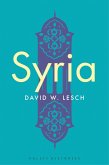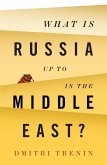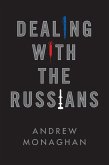For much of the last half century, the Middle East and North Africa (MENA) has seemed the outlier in global peace. Today Iraq, Libya, Israel/Palestine, Yemen, and Syria are not just countries, but synonyms for prolonged and brutal wars. But why is MENA so exceptionally violent? More importantly, can it change? Exploring the causes and consequences of wars and conflicts in this troubled region, Ariel Ahram helps readers answer these questions. In Part I, Ahram shows how MENA's conflicts evolved with the formation of its states. Violence varied from civil wars and insurgencies to traditional interstate conflicts and affected some countries more frequently than others. The strategies rulers employed to stay in power constrained how they recruited, trained, and equipped their armies. Part II explores dynamics that trap the region in conflict--oil dependence, geopolitical interference, and embedded identity cleavages. The catastrophic wars of the 2010s reflect the confounding effects of these traps, culminating in state collapse and intervention from the US and Russia, as well as regional powers like Iran, Saudi Arabia, and the UAE. Finally, Ahram considers the possibilities of peace, highlighting the disjuncture between local peacebuilding and national and internationally-backed mediation. War and Conflict in the Middle East and North Africa will be an essential resource for students of peace and security studies and MENA politics, and anyone wanting to move beyond headlines and soundbites to understand the historical and social roots of MENA's conflicts.
Dieser Download kann aus rechtlichen Gründen nur mit Rechnungsadresse in A, B, BG, CY, CZ, D, DK, EW, E, FIN, F, GR, HR, H, IRL, I, LT, L, LR, M, NL, PL, P, R, S, SLO, SK ausgeliefert werden.
?This book enhances our understanding of organized political violence in the Middle East. Drawing on a wide range of literatures alongside a comparison of case studies, it highlights the factors driving war and conflict in the region. It is a crucial resource for students interested in these topics.?
Brent E. Sasley, University of Texas at Arlington
?Ahram knits together the factors that have trapped the Middle East in violence, capturing the complexities of the region in a straightforward and accessible way. War and Conflict in the Middle East and North Africa is an excellent guide to the region today.?
Daniel Byman, Georgetown University
?Ariel Ahram has cleared the conceptual underbrush and introduced a number of important arguments about conflict in the Middle East. My students will be reading this book. If you want a clear-headed primer on the region's many wars, you should read it, too.?
F. Gregory Gause, III, Bush School of Government and Public Service, Texas A&M University
Brent E. Sasley, University of Texas at Arlington
?Ahram knits together the factors that have trapped the Middle East in violence, capturing the complexities of the region in a straightforward and accessible way. War and Conflict in the Middle East and North Africa is an excellent guide to the region today.?
Daniel Byman, Georgetown University
?Ariel Ahram has cleared the conceptual underbrush and introduced a number of important arguments about conflict in the Middle East. My students will be reading this book. If you want a clear-headed primer on the region's many wars, you should read it, too.?
F. Gregory Gause, III, Bush School of Government and Public Service, Texas A&M University









